Ice Bowl at Lambeau might have frozen Cowboys' Chuck Howley out Hall of Fame for decades
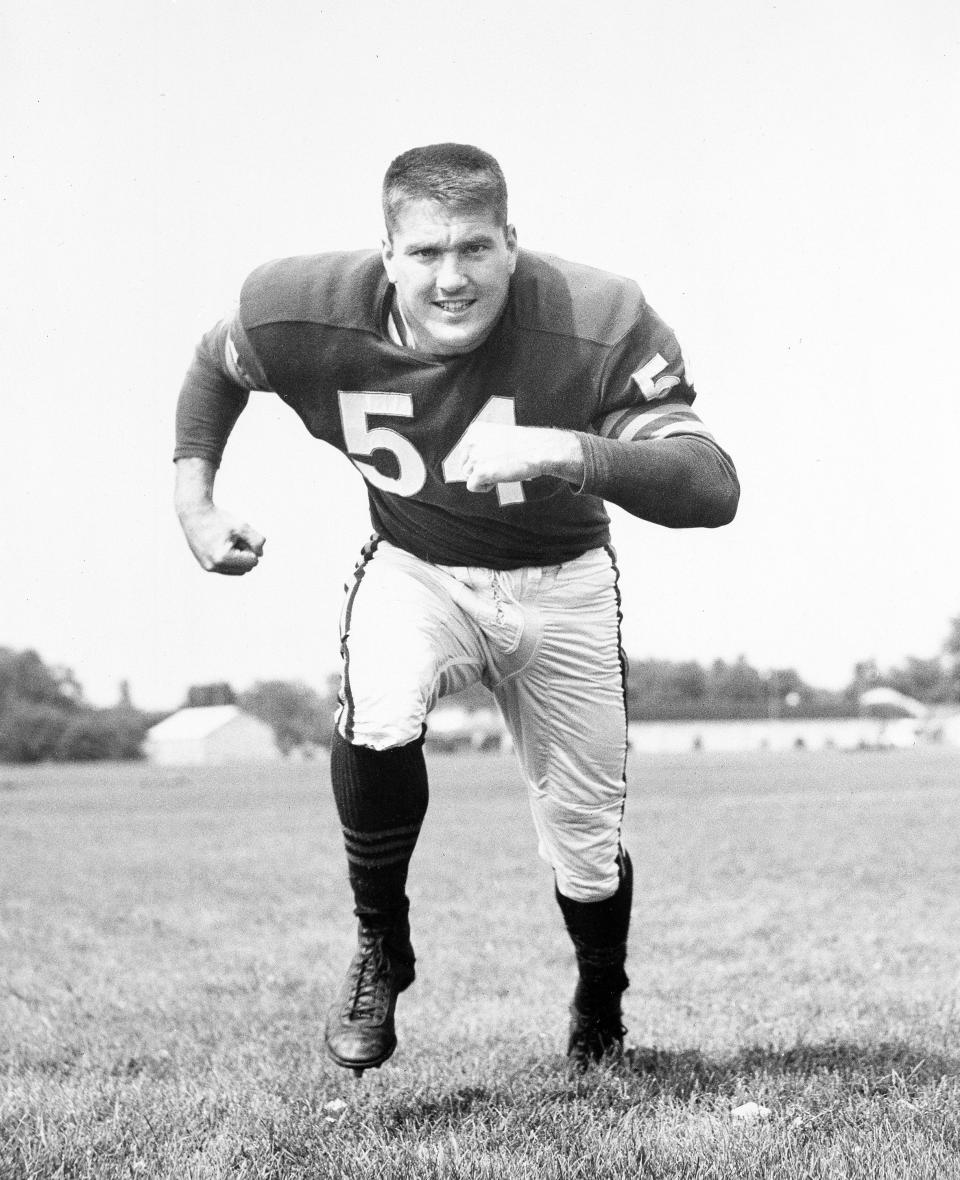
With just a bit more heat, Chuck Howley might have blown into the Pro Football Hall of Fame decades ago.
As luck had it instead, the Ice Bowl frostbit his glowing resume.
Everyone knows Super Bowl winners these days receive the Vince Lombardi Trophy. Lost is the fact Tom Landry's Dallas Cowboys came close to replacing Lombardi's Packers as the kings of the earliest Super Bowls.
The last year before the first Super Bowl was 1965. The National Football League's 14 teams were divided into two conferences, whose winners advanced straight to the NFL Championship Game.
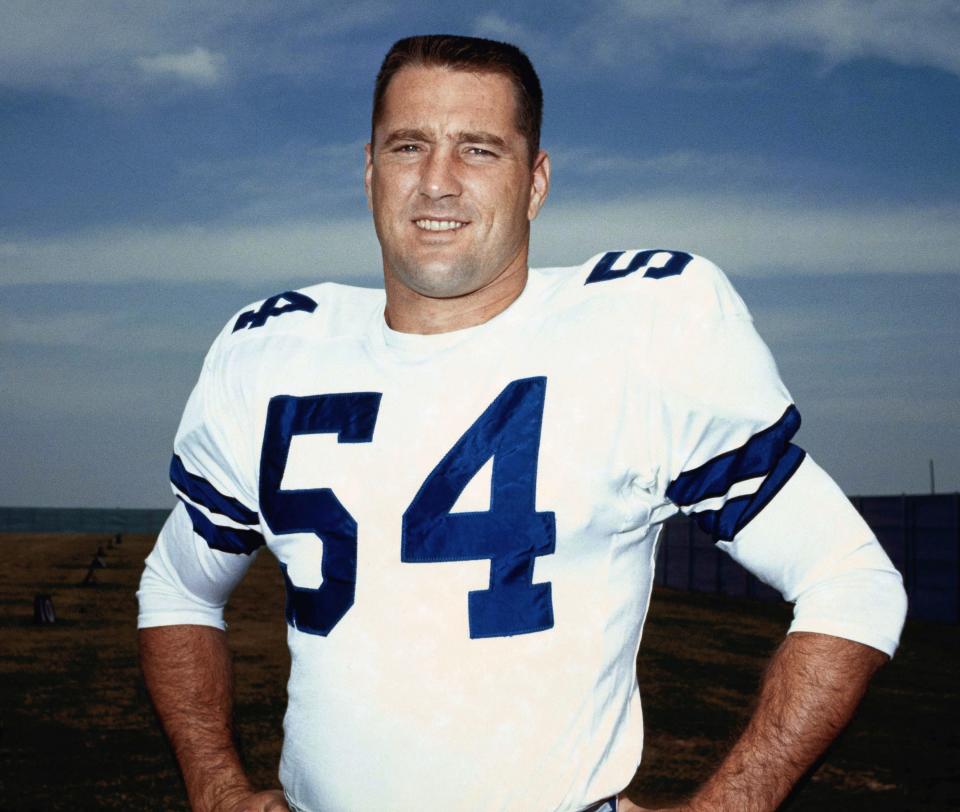
The winner of the East, Cleveland, wound up losing to the winner of the West, Green Bay, 23-12. It was the end of the 45-year-old NFL trying to dismiss the 5-year-old American Football League.
Teams went into 1966 knowing the winners of the NFL and AFL would collide for the first time.
It was a breakthrough year for the Cowboys, a seventh-year NFL expansion team. "Dandy" Don Meredith brought big personality to the offense. Howley, the only man on the team over 30, led what Dallas sports writer Gary Cartwright dubbed "The Doomsday Defense."
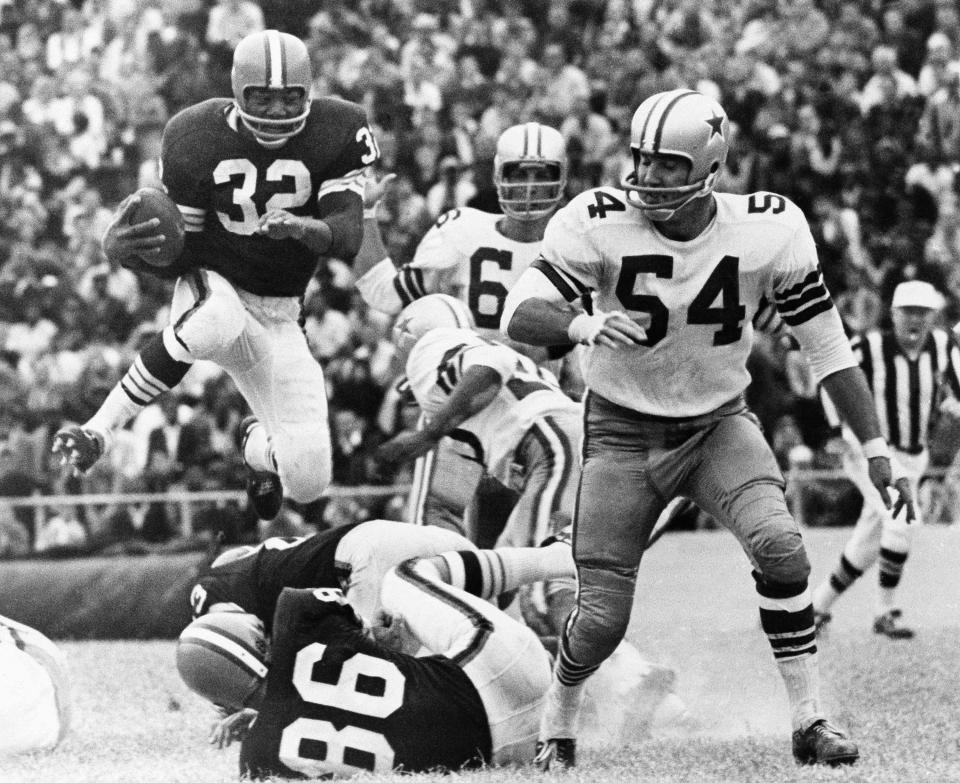
As with 1965, only two NFL teams reached the 1966 postseason, in which the Packers outlasted the Cowboys in a game that could have gone either way. Green Bay advanced to what is now called Super Bowl I and crushed the Kansas City Chiefs.
Cowboys rout Browns ahead of memorable Ice Bowl
The NFL expanded its 1967 postseason field to four teams. As one of the four, the Browns hoped to win at Dallas on Christmas Eve and get to the NFL finals, and from there to Super Bowl II.
That party never started.
In football weather, 44 degrees in the Cotton Bowl, the Cowboys tore up the Browns, at one point leading 52-7.
Dallas at Green Bay became the NFL championship matchup. The weather wasn't terrible, mid-teens with no wind, the day before the game, at which point Howley had a warm feeling.
"If we have another day like this, it will be ideal," Howley told Dallas Morning News writer Frank Luksa.
The Cowboys' speed killed Cleveland. Howley saw it having the same affect on Green Bay.
Then the gales blew in.
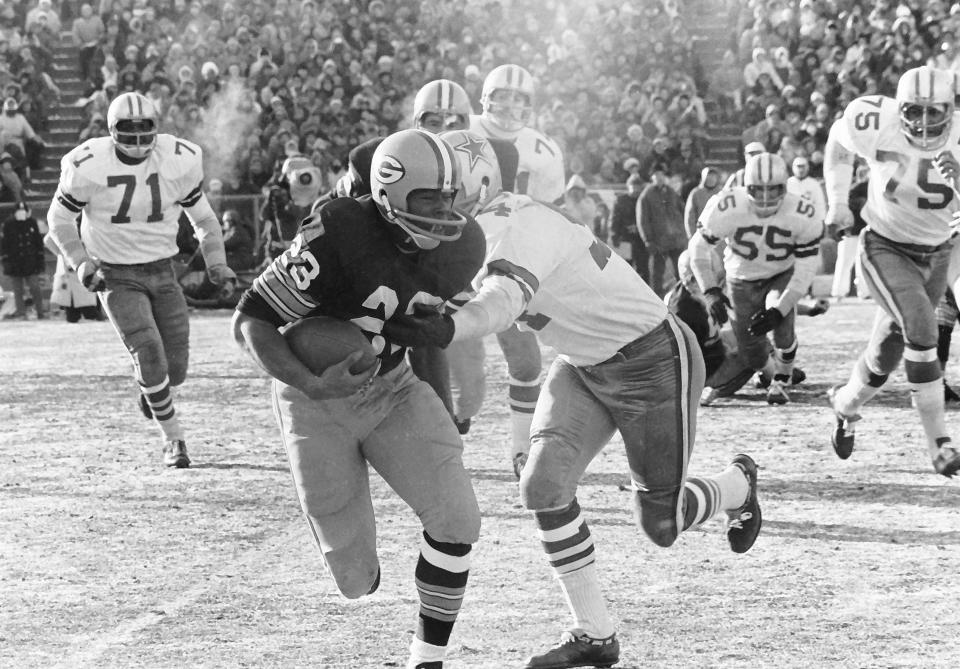
The temperature for the 1 p.m. kickoff was minus-15, with sub-human wind chills. A college marching band never made it to the national anthem. Several horn players went to the hospital after instruments stuck to their lips.
Lambeau's underground field-heating system died, leaving a skating rink in weather fit only for suffering. Howley was front and center in the Ice Bowl, which Packers linebacker Dave Robinson, among others, said should have been postponed.
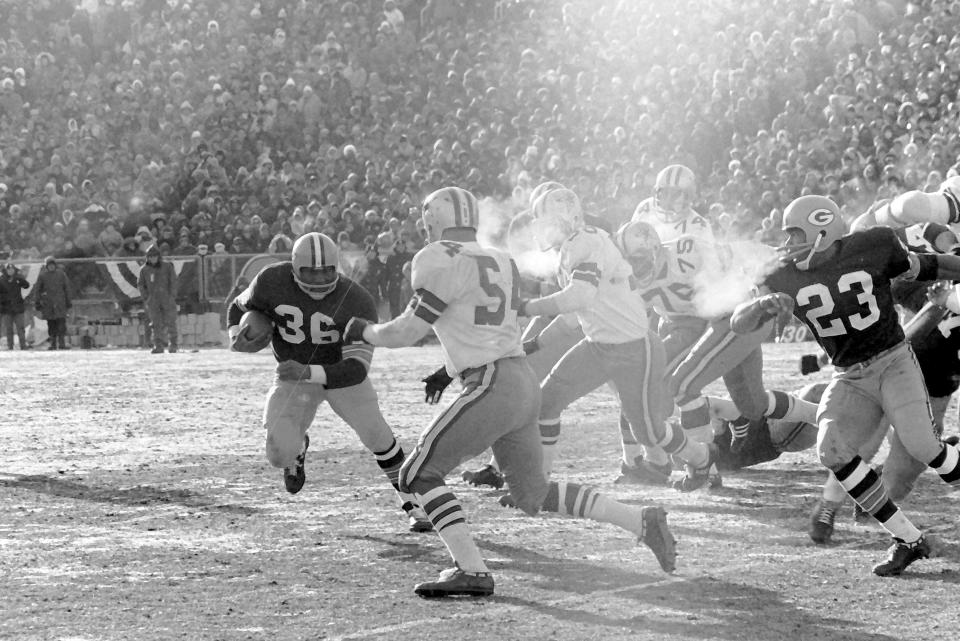
Meredith steered the Cowboys to a late 17-14 lead. The Packers took over on their own 32 with 4:50 left.
Green Bay's Bart Starr dumped two short passes to running back Donny Anderson, gains of 12 and 9 yards on which Howley slipped and fell as Anderson ran by.
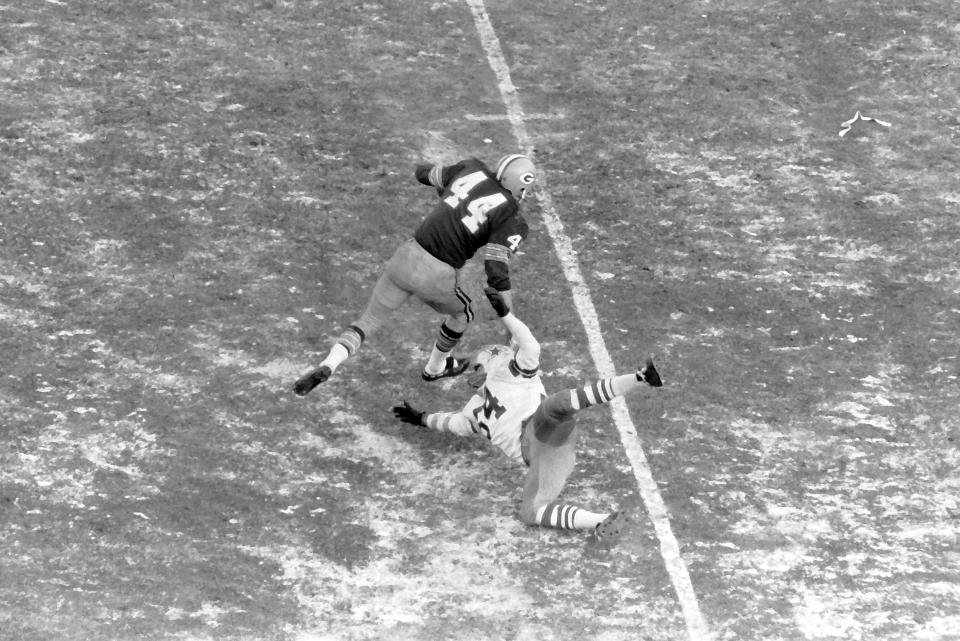
With 16 seconds left and Green Bay's timeouts gone, it was third-and-goal from the 1. Starr called a sneak and scored.
Had Starr stalled, Dallas would have been a heavy favorite to beat the Oakland Raiders in what is now called Super Bowl II. The Super Bowl name actually wasn't adopted until the next year.
Chuck Howley stars in two Super Bowls — MVP in a loss, big pick in a win
Three years later, in Super Bowl V against the Colts, Howley intercepted Johnny Unitas, sacked Earl Morrall while forcing a fumble, and made another interception to earn game MVP honors.
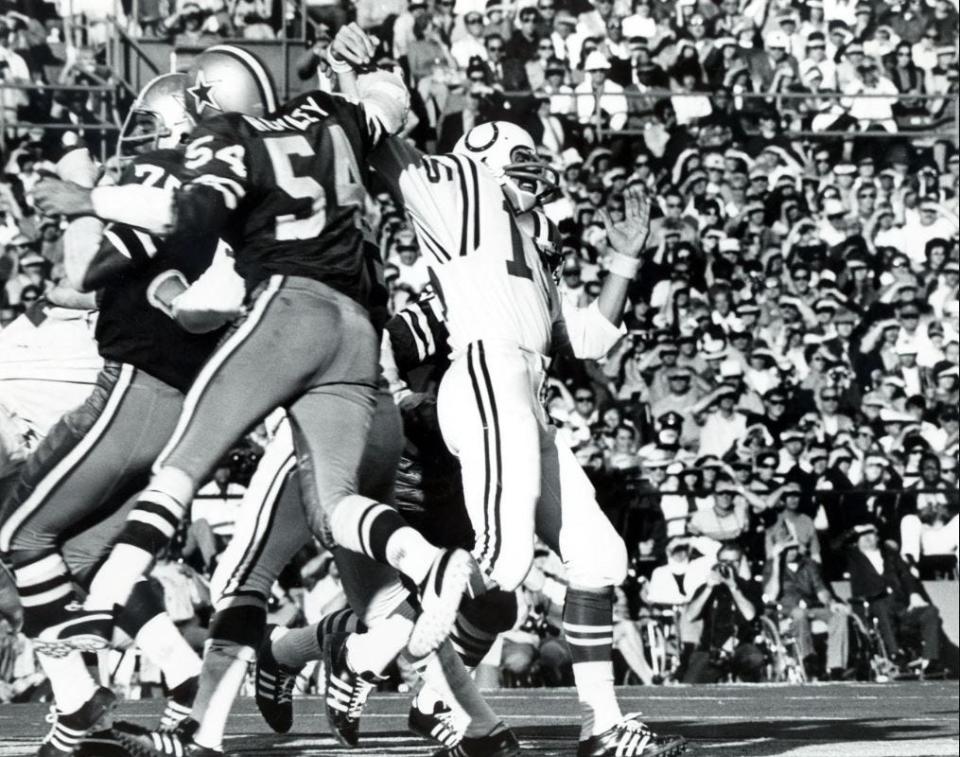
He remains the only member of a Super Bowl loser to be named MVP — the Colts won 16-13.
The next year, in Super Bowl VI, Howley returned an interception of Bob Griese 41 yards and was part of a dominant defense in a 24-3 rout of Don Shula's Dolphins.
𝙎𝙪𝙥𝙚𝙧 𝘽𝙤𝙬𝙡 𝙈𝙤𝙢𝙚𝙣𝙩𝙨
Chuck Howley helps the @dallascowboys win their first Super Bowl with this INT in #SBVI, one year after he won MVP in #SBV.#ProMountaineers pic.twitter.com/jqKr7BvKVX— West Virginia Football (@WVUfootball) February 12, 2022
The weight of a winning the "Ice Bowl" might have gotten Howley to the Hall of Fame much sooner. As it stands, he is a member of the Class of 2023, 50 years after playing his last game.
The impact of the Ice Bowl was shared by Meredith's wife at the time, Cheryl, in a 2017 NFL Network documentary — Don died in 2010.
"My whole life would have been different," she said. "Don's life would have been different. Not only did it break my heart, it wounded my soul. You don't ever get over something like that."
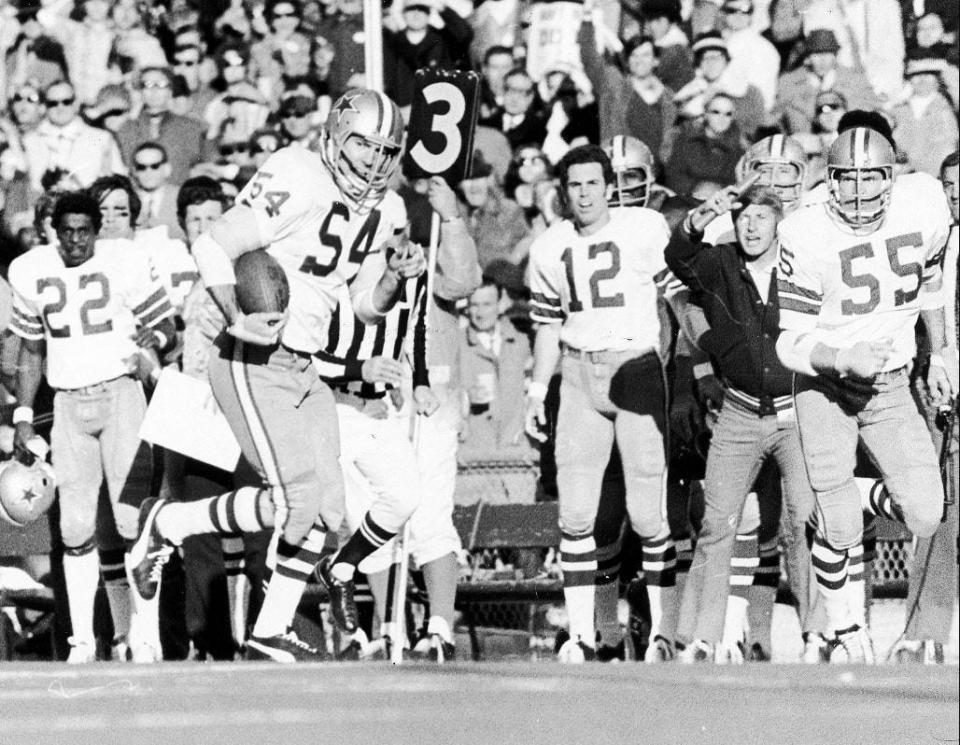
Chuck Howley's journey to Super Bowl hero, Hall of Fame began in West Virginia
Howley grew up 90 miles from Canton in Wheeling, West Virginia, when the population was at an all-time high of about 60,000, twice its current level.
He amused his friends and amazed West Virginia University by competing in track, wrestling, gymnastics and swimming, in addition to playing both ways, at guard and linebacker, in football.
Howley has lived most of his 86 years in Dallas, 1,200 miles from Wheeling, but his NFL career began in Chicago.
George Halas' Bears drafted him seventh overall in 1958, after other teams took King Hill, John David Crow, Dan Currie, Lou Michaels, Red Phillips and Walt Kowalczyk.
That draft was sprinkled with future Hall of Famers Alex Kehres, Jim Taylor, Ray Nitschke, Jerry Kramer, Bobby Mitchell and John Madden.
Howley played in every game as a Bears rookie before a knee injury wrecked his 1959 season. He sat out 1960 and took a job managing a West Virginia gas station.
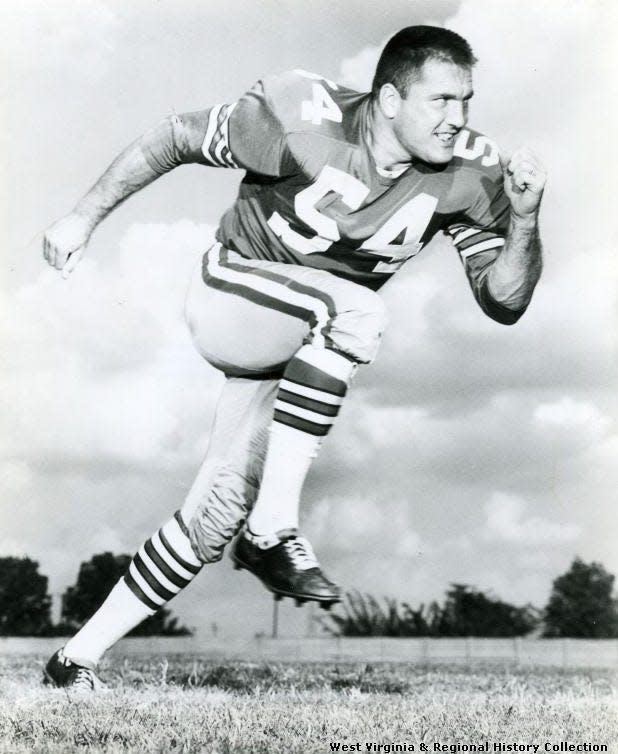
Chuck Howley traded to Cowboys, becomes one of the early stars of "America's Team"
The Bears traded him to a second-year expansion team, Dallas, in 1961. He became an outside linebacker under Landry, who ranks fourth all-time in coaching wins behind Shula, Halas and Bill Belichick.
Landry's career record when Howley arrived was 0-11-1. In their first four years together, Landry and Howley went 18-35-3. Across their next eight years, the Cowboys went 80-30-2.
It was the foundation that emboldened NFL Films announcer John Facenda to dub the Cowboys "America's Team" later in the '70s.
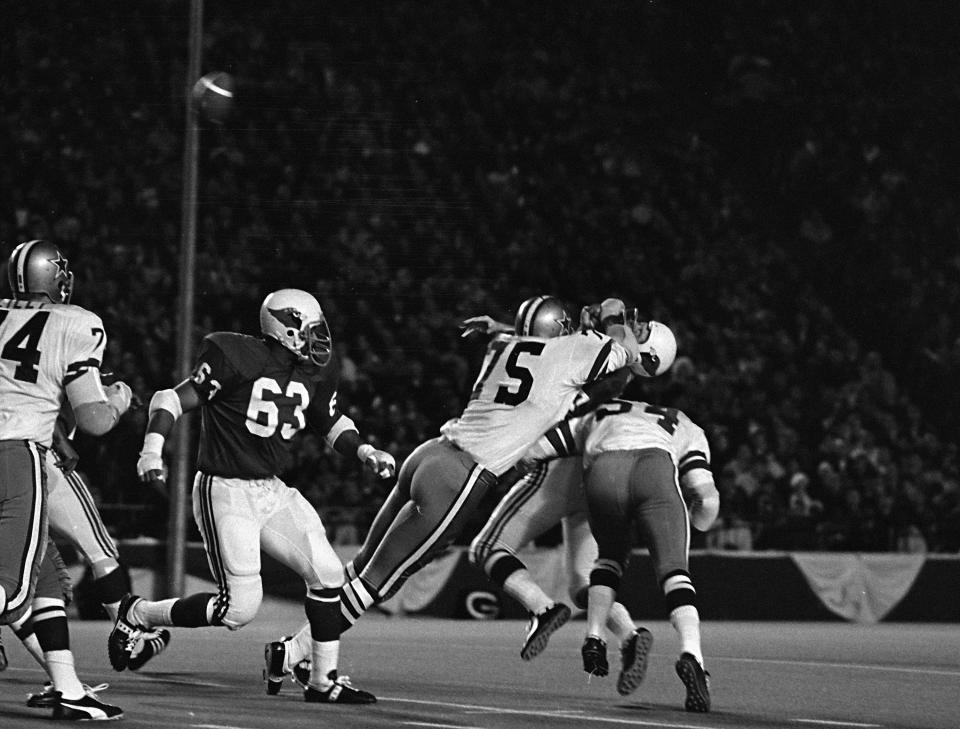
Howley was big (6-foot-3, 230 pounds), fast, physical and efficient.
The Cowboys perpetuate this quote from defensive guru Landry, obtained before his death in 2000: "I don't know that I've seen anybody better at linebacker than Howley."
Hall of Fame General Manager Gil Brandt, who traded for Howley in 1961, made a post-Cowboys career of brainstorming media lists.
Chuck Howley 'never gave up his dream of making the Hall of Fame'
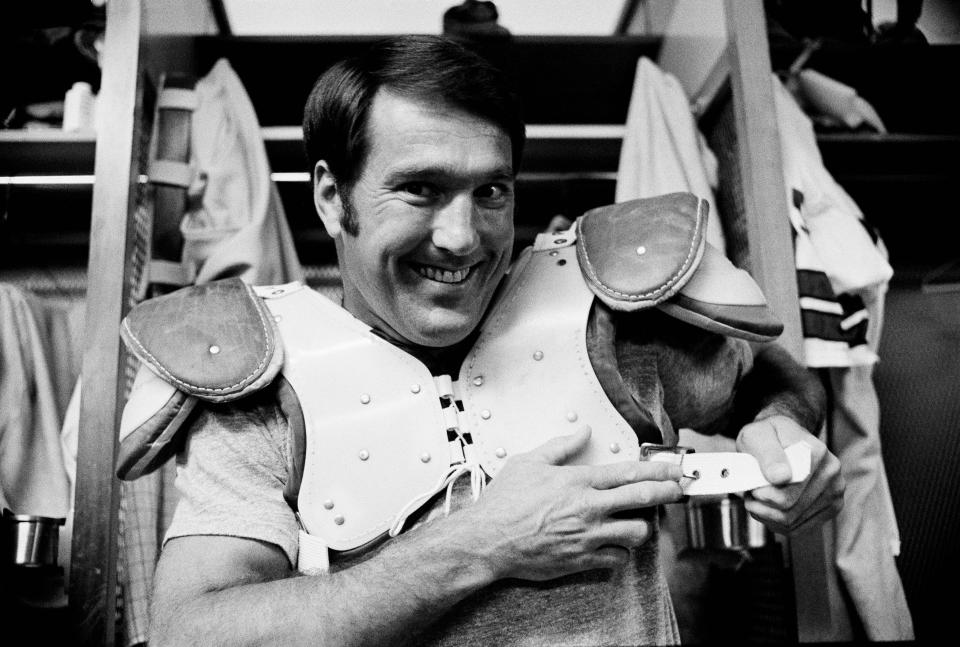
In a 2019 NFL Network ranking of history's best linebackers, Brandt ranked Howley No. 8 behind (starting with No. 1): Lawrence Taylor, Derrick Thomas, Dick Butkus, Ted Hendricks, Derrick Brooks, Bobby Bell and Bill George.
Brandt had Howley ahead of No. 9 Jack Ham, No. 10 Joe Schmidt, No. 11 Ray Nitschke, No. 12 Ray Lewis, No. 13 Kevin Greene, No. 14 Junior Seau, No. 15 Dave Robinson and No. 16 Mike Singletary. Lee Roy Jordan, Howley's teammate for 10 years, was No. 31.
The Cowboys' Howley and Jordan and the Packers' Nitschke and Robinson all played in the Ice Bowl.
After football, Howley built reportedly booming businesses around uniforms and horses.
Following his Hall of Fame election early this year, ex-teammates Jordan, Roger Staubach, Bob Lilly, Mel Renfro, Cliff Harris, and Charlie Waters traveled to his Dallas-area home to celebrate with the family.
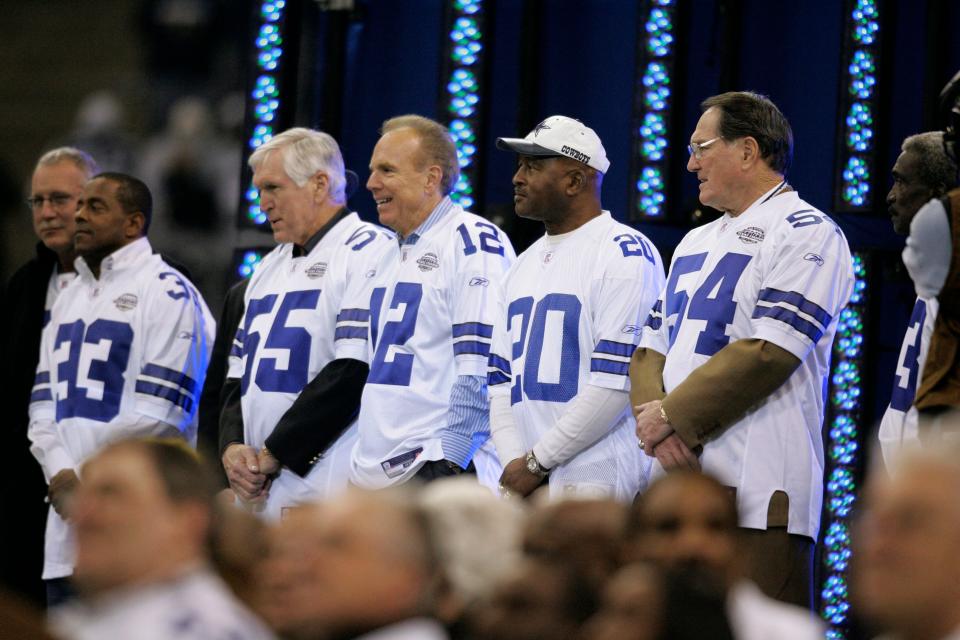
Howley and his family have dealt with his years-long battle with dementia. It was hard to tell how much he grasped as Staubach broke the Hall of Fame news.
"Thank you," he told Staubach. "That's good."
Trying to jog Howley's memory, Staubach said, "Old No. 54 … remember how you used to give me a hard time when I was a rookie?"
Howley's son Scott spoke for his father.
“Even after all these years," he said, "my dad never gave up his dream of making the Hall of Fame.”
Reach Steve at steve.doerschuk@cantonrep.com
On Twitter: @sdoerschukREP
This article originally appeared on The Repository: Dallas Cowboys Chuck Howley joins Tom Landry in Canton Hall of Fame

